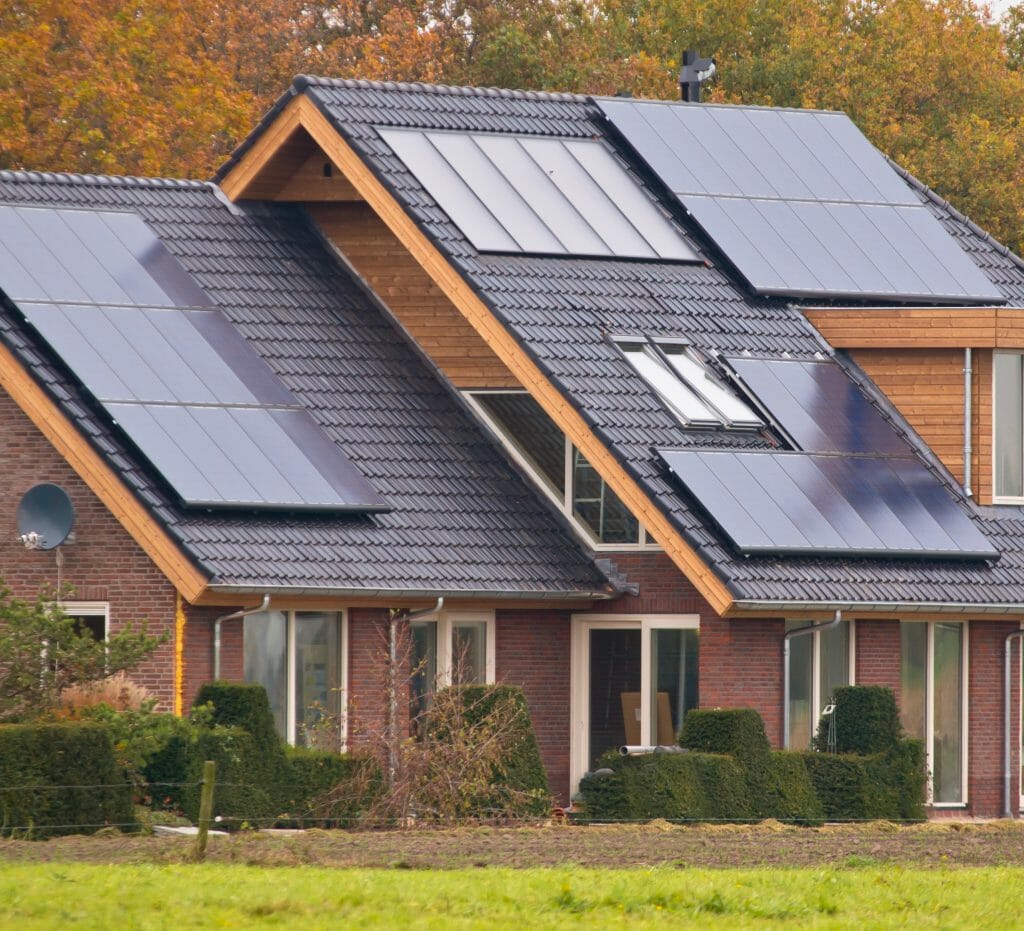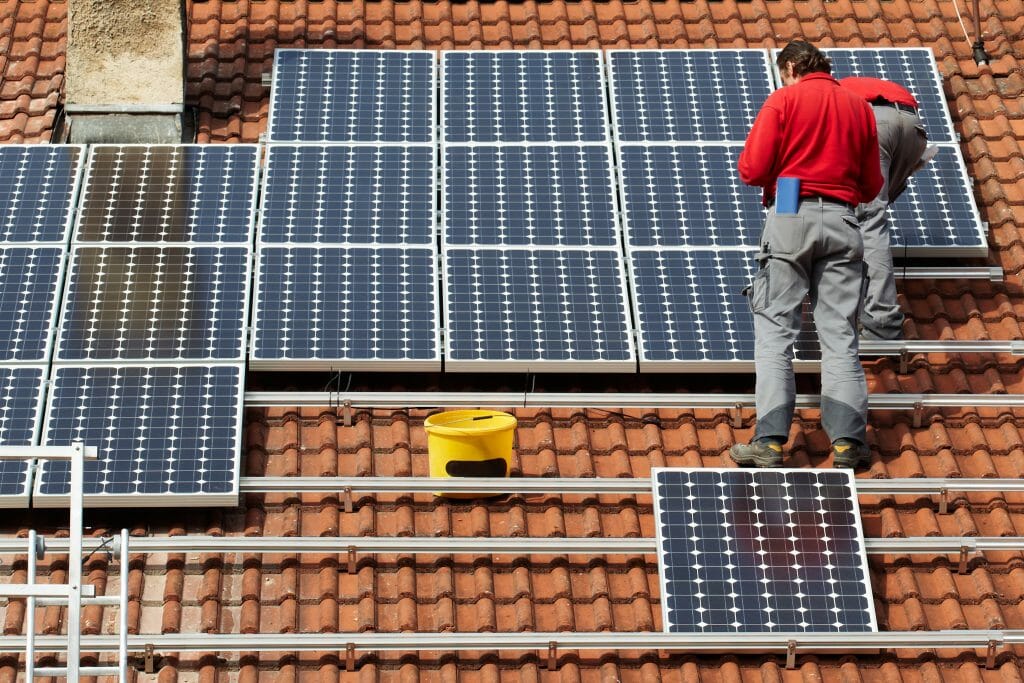Are you doing a solar project?
Modernize can pair you with three to four pros in your area, so you can compare options and save time and money.
Solar panels, once something from the future, are now a common sight on homes across the country. They can help lower your home’s energy bill, or can help you get off the grid completely. In the most basic terms, solar panels generate electricity when particles of light, or photons, knock electrons free from atoms. This process is known as the photo-voltaic effect. Solar panels, like homes, can be customized to fit your needs, starting with solar cells. Below is an explanation of what solar panels are made of to help you understand how energy from the sun in converted into electricity for your home.

Solar cells are the building blocks of solar panels. They are responsible for absorbing sunlight and turning it into heat or energy. Solar cells are grouped to form solar modules. Most modules use either wafer based crystalline silicon cells or thin-film cells with a base of either cadmium telluride or silicon. Generally, if the solar module uses thin-film cells, the module will be more flexible than other rigid solar modules.
Silicon Cells vs. Thin-Film Cells
Silicon cells are the most common for several reasons. Their efficiency is in the 15%-25% range and silicon cells are considered reliable technology. Another benefit is the longevity of a silicon cell and its ability to withstand harsh conditions. When it comes time to replace a silicon cell, its parts are easier to recycle or dispose of responsibly. There is a downside with choosing silicon solar cells— the initial installation cost of solar cells can be enough to deter home and land owners from installing them.

Silicon Solar Cells
A silicon cell is made up of seven layers and is surrounded by a front contact:
- A glass cover, which is where the light enters and proceeds towards the conductors
- Transparent adhesive
- Anti Reflective coating
- An N-type semiconductor
- A P-type semiconductor
- Back contact
Thin Film Solar Cells
Thin-Film cells are somewhat less expensive to produce than silicon cells, however they are not always as efficient as silicon cells. However, thin-film solar cell technology is still relatively new, so that may change as breakthroughs are made. Depending on your budget, thin-film solar cells may be a wise choice. They are less expensive to install than their predecessors, despite the need for specialized contractors for the installation.
Find the Right Contractor for Your Solar Project
Whether you’re ready to begin your project now or need some expert advice, our network of contractors are here to help. With a few simple questions, we’ll find the best local professionals for you
As the name implies, thin-film cells are made up of only six layers:
- Transparent conducting coating
- Anti Reflective coating
- N-type window semiconductor
- P-type semiconductor
- A layer to conduct the current between the N-type and P-type
- Back contact
Both silicon cells and thin-film cells are excellent choices for use on your home or land.
Solar Modules
Solar cells—either silicon or thin-film—are connected in a series to meet the desired energy output from the sun’s rays. A wire made of silver, copper or another type of non-magnetic conductive material connects the cells to one another. Typically, a solar module is made up of a 6×10 or 6×12 grid of solar cells.
Some solar modules incorporate materials that scatter the sun’s rays across the cells, which allows for more photons to be absorbed—meaning more energy is converted into electricity. This is becoming more and more common, as technology improves, because it allows for solar modules to convert different spectrums of light. Meaning that over time, solar panel technology is becoming more efficient.
Solar Panels

Solar panels, then, are comprised of a collection of solar modules. The number of modules that make up that solar panel depends on a number of items:
- The size of your roof, or area the panels will be installed
- Your goal for solar energy: Are you looking to reduce your carbon footprint and energy bill? Or are you wanting to live off-grid as much as possible?
- The quality of sunlight the panels will receive. It may be necessary to install more solar panels in order to reduce energy costs if the panels don’t receive direct sunlight. If this is the case, don’t despair. Talk to a solar panel contractor about your options, as there are solar panels for nearly any location and climate.
Find the Right Contractor for Your Solar Project
Whether you’re ready to begin your project now or need some expert advice, our network of contractors are here to help. With a few simple questions, we’ll find the best local professionals for you
Reviews from Real Homeowners
Welcome to Homeowner Resources! We are the Modernize blog. Modernize pairs more than 3 million homeowners a year with pre-vetted contractors in their area. This blog started because we believe homeowners should know everything about their homes, from how their HVAC works to which front door colors they might love. On Homeowner Resources, you can find information on every part of your home, right down to how you can negotiate with contractors to get the best price. Here's more about the blog.
Need a contractor? Learn more about how Modernize finds the right pro for you.



